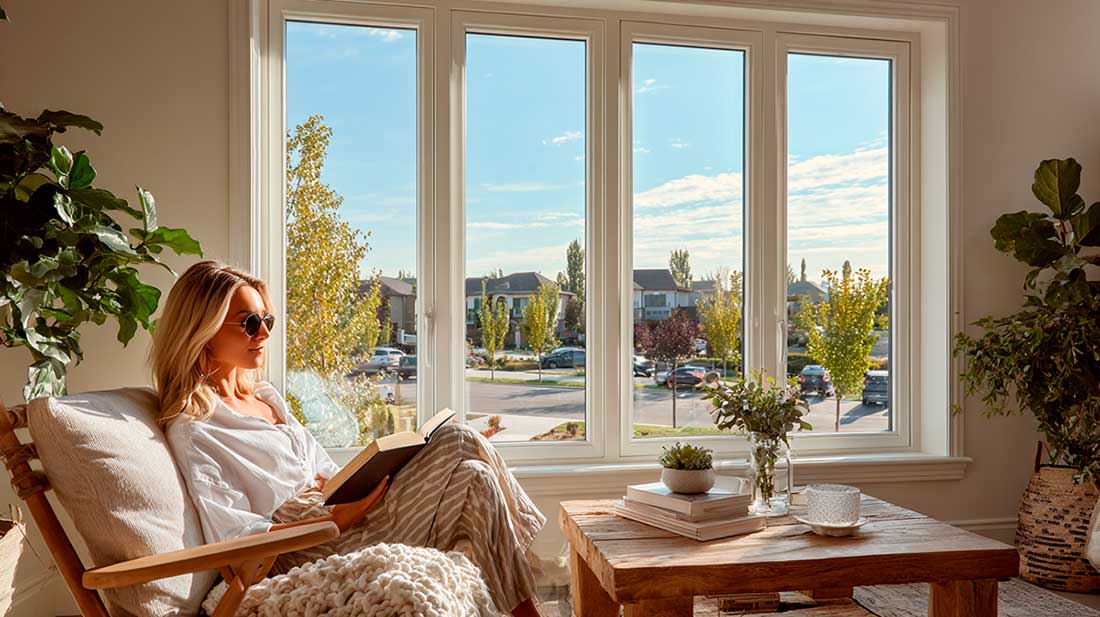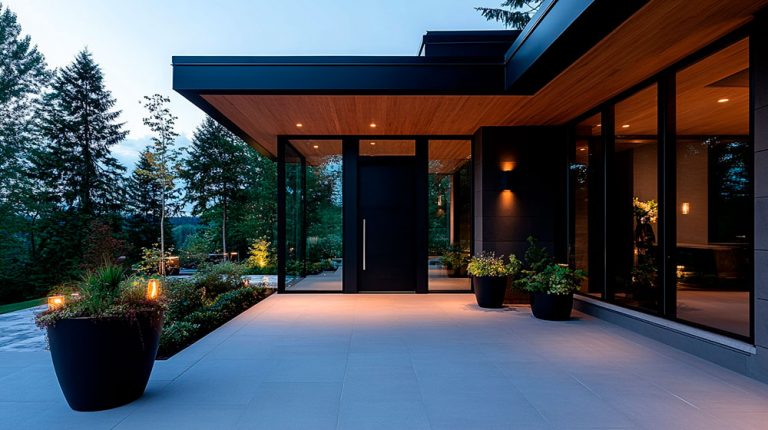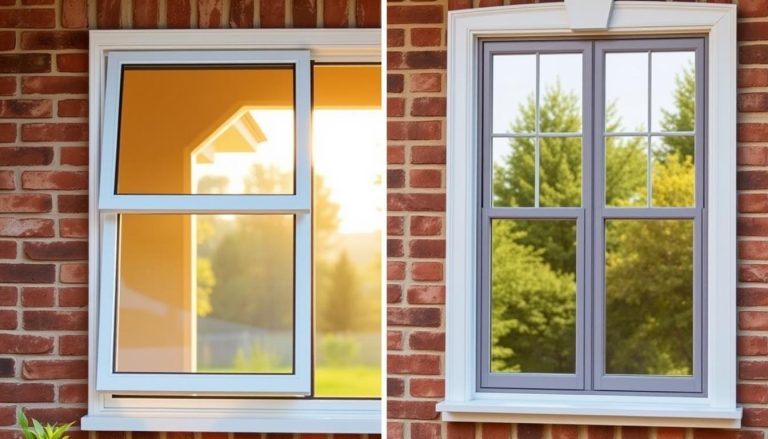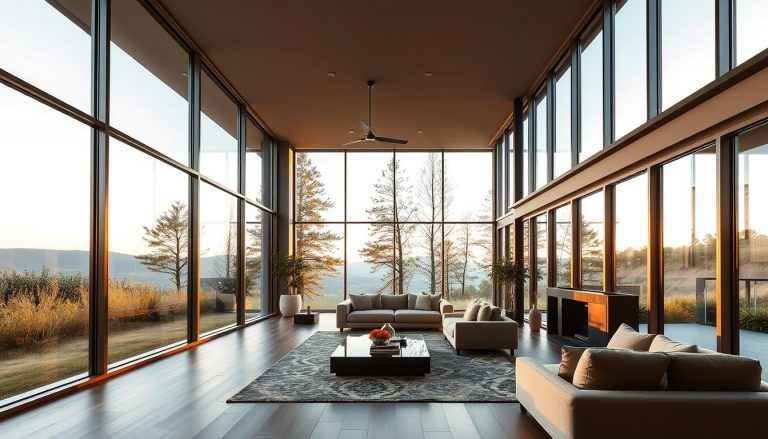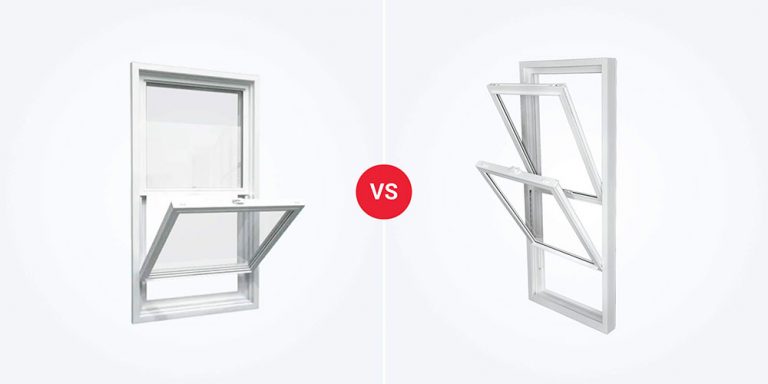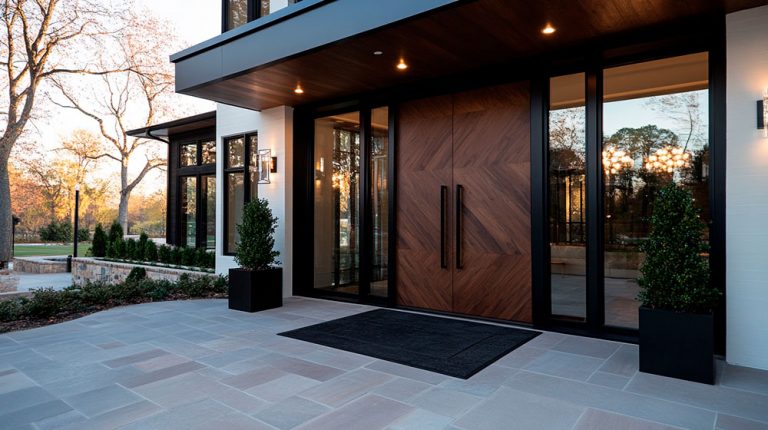As Project Manager at Total Home Windows and Doors, I’ve spent over a decade helping Ontario homeowners tackle one of their most persistent problems: unwanted noise infiltrating their homes through windows. Window sound insulation involves using specialized glazing, sealing techniques, and additional barriers to reduce noise transmission through your windows. The most effective methods include installing triple-pane windows with laminated glass, adding soundproof window inserts, sealing air gaps with acoustic caulk, and using heavy curtains or acoustic panels. Professional soundproof windows can reduce noise by 75-95%, while DIY solutions typically achieve 20-50% noise reduction at a fraction of the cost.
Living in the Greater Toronto Area means dealing with everything from street noise and loud neighbours to construction sounds and traffic. After helping thousands of customers find peace and quiet in their homes, I can tell you that understanding how to soundproof windows effectively can transform your living space from a source of stress into a true sanctuary.
Window Replacement Near Me
Understanding How Sound Travels Through Windows
Sound waves behave like water—they’ll find the smallest gap or weakness in your home’s defences. Windows, by their very nature, are the weakest links in your wall system when it comes to blocking noise pollution. Unlike solid walls that can be 6-8 inches thick with insulation, your window frame and glass create a much thinner barrier against exterior noise.
When sound vibrations hit your windows, several things happen simultaneously. The glass itself vibrates like a drum membrane, transmitting those vibrations directly into your room. Meanwhile, air gaps around the window frame act like acoustic highways, allowing sound to bypass the glass entirely. The combination creates a perfect storm for noise transmission.
Cherry Jian, our Sales Consultant, often explains to customers: "Think of your windows like speakers in reverse. Instead of pushing sound out, they're letting it in through every possible pathway. The key is understanding these pathways so we can block them effectively."
Different materials respond differently to various frequencies. Single pane windows are particularly vulnerable because they lack the mass and air space needed to dampen sound effectively. Low-frequency sounds like traffic rumble pass through easily, while high-frequency sounds like barking dogs or sirens can be equally problematic.
The construction of your window frame also plays a crucial role. Vinyl frames with hollow chambers can actually amplify certain frequencies, while solid materials provide better sound dampening. Understanding these fundamentals helps explain why some solutions work better than others for different noise problems.
Find related services
Types of Window Sound Insulation Solutions

Professional Soundproof Windows
When clients ask me “are triple pane windows more soundproof”, the answer isn’t as straightforward as you might expect. Triple pane windows can provide better sound insulation than single or standard double pane windows, but the improvement isn’t always dramatic and depends on several factors. The effectiveness of soundproofing is influenced more by the thickness and type of glass (especially laminated glass) and the air space between panes rather than simply the number of panes.
Here’s what makes professional soundproof windows effective:
| Feature | Single Pane | Double Pane | Triple Pane | Laminated Double Pane |
| STC Rating | 25-27 | 28-32 | 32-36 | 35-40 |
| Noise Reduction | Basic | Moderate | Good | Excellent |
| Cost Factor | $ | $$ | $$$ | $$ |
| Energy Efficiency | Poor | Good | Excellent | Good |
Sound Transmission Class (STC) ratings measure how well materials block sound. Higher numbers mean better sound reduction. However, I’ve seen cases where double pane windows with thicker, laminated glass outperform triple pane windows with thinner glass.
Our energy efficient windows often incorporate laminated glass, which consists of more layers of different materials. A thin plastic interlayer between two pieces of glass dramatically improves sound dampening while maintaining clarity and energy efficiency.
DIY Soundproofing Options
For homeowners seeking immediate relief without major renovation, several DIY approaches can reduce noise significantly:
Acoustic caulk remains one of the most cost-effective solutions. Unlike regular caulk that hardens and cracks, acoustic caulk stays flexible and maintains its seal against sound transmission. Apply it around your entire window frame, paying special attention to corners where cracks are most common.
Soundproof windows inserts offer excellent results for existing windows. These acoustic inserts create an additional barrier with minimal installation requirements. Custom-fit inserts made of laminated glass or thick acrylic panel materials can reduce noise levels by 20-30 decibels.
Eugene Siukayev, our Project Manager, notes: "I've seen homeowners achieve remarkable results with quality window inserts. They're particularly effective against consistent noise sources like traffic or air conditioning units from neighbouring buildings."
Heavy acoustic curtains and specialized blinds add another layer of sound absorption. While they won’t completely block all noise, they can significantly dampen sound, especially when combined with other measures.
Find related products
How to Soundproof Existing Windows Without Replacement
Many Ontario homeowners live in older homes with standard windows that weren’t designed with noise reduction in mind. Fortunately, several techniques can dramatically improve how to sound insulate windows without complete replacement.
1. Seal Air Gaps
Start by identifying every gap where air (and sound) can infiltrate:
- Check weatherstripping around the sash
- Inspect the junction between frame and wall
- Look for gaps in the sill area
- Examine corners where different materials meet
Use high-quality weatherstripping designed for acoustic applications. Unlike standard weatherstripping that focuses primarily on air infiltration, acoustic versions use denser materials that block sound transmission more effectively.
2. Add Mass and Barriers
Double glazing your existing windows creates the crucial air space needed for effective sound dampening. Installing a second acrylic panel or glass sheet inside your existing frame essentially transforms single pane windows into double pane systems.
For how to soundproof single pane windows, this approach is particularly effective. The air trapped between the original window and your new barrier acts as insulation against both sound and heat transfer.
3. Window Films and Treatments
Sound-dampening window films add mass to your glass surface while remaining virtually invisible. These specialized films use multiple layers of different materials with varying densities to disrupt sound transmission across multiple frequencies.
Combining window films with heavy curtains creates multiple barriers with different thicknesses, each targeting different aspects of noise pollution. The film handles direct glass transmission while curtains absorb reflected sound within the room.
Professional Window Replacement for Maximum Sound Reduction
Sometimes, particularly with very old or damaged windows, replacement offers the best way to soundproof windows long-term. At Total Home Windows and Doors, we’ve installed thousands of windows specifically chosen for their acoustic properties.
Installing soundproof windows involves more than just choosing the right glass. The entire system—frame, seals, hardware, and installation technique—must work together to create an effective sound barrier.
Our new windows designed for sound reduction incorporate several advanced features:
- Laminated glass with acoustic interlayers
- Asymmetrical glass thicknesses (different thicknesses on each pane)
- Inert argon gas fills for enhanced insulation
- Specialized frame designs that minimize vibration transmission
Alexandr Naumov, our Project Manager, explains: "The installation process itself is crucial for acoustic performance. Even the best soundproof windows will fail if there are gaps in the installation. We use specialized acoustic sealants and techniques to ensure every seal is airtight."
STC Ratings and Performance Expectations
Understanding STC ratings helps set realistic expectations:
| STC Rating | Performance Level | Common Sounds Blocked |
| 25-30 | Basic | Loud speech becomes audible |
| 30-35 | Good | Normal speech becomes inaudible |
| 35-40 | Very Good | Loud speech becomes inaudible |
| 40-45 | Excellent | Cars and most traffic noise significantly reduced |
| 45+ | Outstanding | Even loud music and construction noise greatly diminished |
Professional acoustic windows typically achieve STC ratings of 40-50, representing a dramatic improvement over standard residential windows rated at 25-30.
Cost Analysis: DIY vs Professional Soundproofing
The cost to soundproof a window typically ranges from $300 to $1,500 per window, with an average cost around $900 per window. The price varies depending on window size, materials, installation complexity, and the specific soundproofing method used.
Budget-Friendly Solutions ($50-$200 per window)
- Acoustic caulk and weatherstripping: $15-$30
- Heavy curtains or blinds: $50-$150
- Window films: $25-$75
- DIY foam inserts: $30-$100
Mid-Range Improvements ($200-$500 per window)
- Professional soundproof windows inserts: $250-$500
- Plexiglass secondary glazing: $150-$300
- Custom acoustic panels: $200-$400
Premium Solutions ($500-$1,500+ per window)
- Complete window replacement with acoustic glass: $600-$1,500
- Professional installation with structural modifications: $800-$2,000
- High-end laminated glass systems: $1,000-$2,500
Window inserts, which are often highly effective, represent excellent value in the mid-range category. They can create substantial noise reduction without the expense and disruption of full window replacement.
Soundproofing Solutions for Different Housing Types
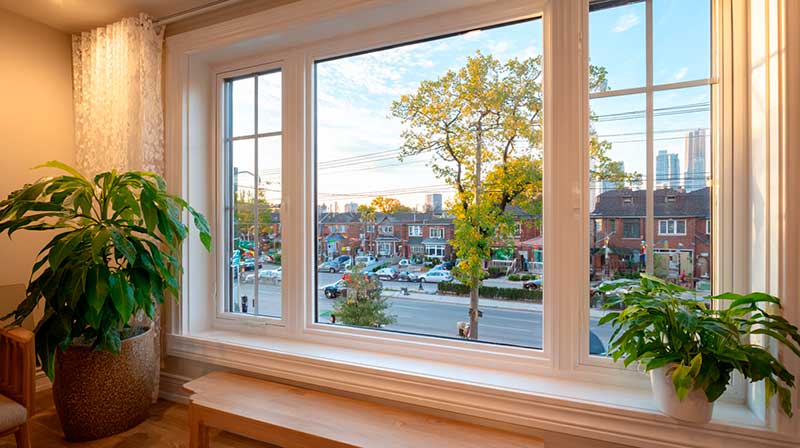
Apartment and Condo Soundproofing
Renters face unique challenges when dealing with outside noise. Most lease agreements prohibit permanent modifications, making traditional solutions impossible. However, several effective approaches won’t damage property or violate rental agreements.
Removable acrylic panels cut to fit snugly inside window frames create an additional air barrier without permanent attachment. These panels can be easily stored when not needed and leave no trace upon removal.
Magnetic weatherstripping provides temporary sealing around window frames. The magnetic strips adhere to metal frames without adhesive, creating effective seals against air gaps that can be removed without damage.
Single-Family Homes
Homeowners have more options for comprehensive soundproofing strategies. Combining window treatments with other improvements like acoustic wall treatments and roof insulation creates whole-home acoustic comfort.
Planning becomes crucial when addressing multiple noise sources. Street noise might require different solutions than aircraft noise or industrial sounds. A comprehensive approach considers the entire building envelope, not just windows.
Specialized Soundproofing Techniques
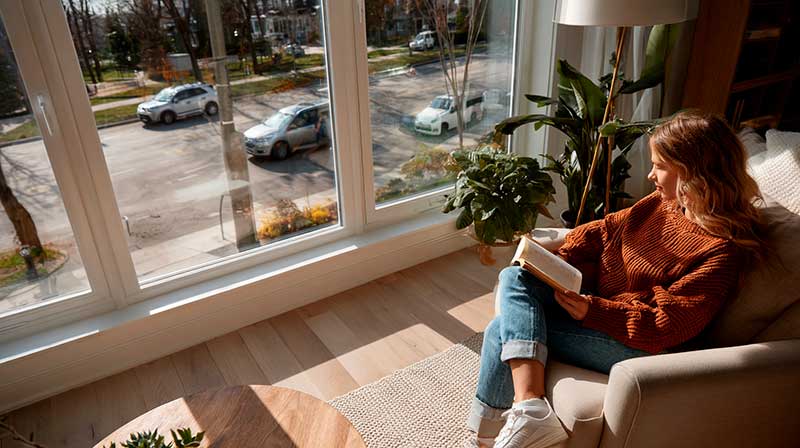
Advanced Insert Systems
Professional acoustic insulation windows inserts go beyond simple acrylic panels. Custom-manufactured systems use laminated glass matched to your specific noise problems, with frames designed to integrate seamlessly with existing architecture.
These systems often incorporate glazing technologies borrowed from commercial construction, where noise control is critical. Multiple layers of specialized materials target different frequency ranges, from low-frequency traffic rumble to high-frequency mechanical sounds.
Double-Window Systems
Creating true double-window systems involves installing completely separate window units with substantial air space between them. This approach can achieve noise reduction comparable to professional recording studios, making it impossible for even very loud sounds to penetrate.
The key is maintaining proper air space—typically 4-6 inches minimum—and ensuring both window systems are properly sealed. The trapped air acts as a massive sound barrier, while different panes prevent resonance between systems.
Common Soundproofing Mistakes to Avoid
After years of troubleshooting acoustic problems, I’ve identified several common mistakes that undermine otherwise good soundproofing efforts:
- Incomplete sealing represents the biggest problem. Sound, like water, will find any path through your defences. A single unsealed gap can negate thousands of dollars in acoustic improvements.
- Ignoring flanking paths means focusing only on the window while ignoring sound transmission through adjacent construction elements. Sound travels through walls, floors, and ceilings, potentially bypassing even perfect window treatments.
- Choosing inappropriate materials for your specific noise problems leads to disappointing results. Low-frequency sounds require different materials and techniques than high-frequency noise.
Professional vs DIY: Making the Right Choice
The decision between professional installation and DIY approaches depends on several factors beyond just cost. Your noise problem’s severity, your home’s construction, and your long-term plans all influence the optimal solution.
For moderate noise problems—like common sounds from neighbours or light traffic—DIY solutions often provide satisfactory relief. Acoustic caulking, weatherstripping, and removable inserts can transform your acoustic environment for hundreds rather than thousands of dollars.
Severe noise problems requiring significant sound reduction typically demand professional solutions. If night sounds consistently disrupt sleep or if loud noises interfere with daily activities, investing in professional soundproof windows work becomes a quality of life issue worth the investment.
Do soundproof windows work effectively? Absolutely, when properly specified and installed. Our customers regularly report dramatic improvements in sleep quality, reduced stress levels, and enhanced enjoyment of their homes. The difference between living with constant noise intrusion and enjoying acoustic peace cannot be overstated.
Whether you choose DIY solutions or professional installation, the key is understanding your specific noise challenges and selecting appropriate solutions. With proper planning and execution, achieving meaningful window sound insulation is entirely achievable for any Ontario homeowner.
From our 14 years of experience serving the Greater Toronto Area, I can confidently say that every home can benefit from improved acoustic comfort. The question isn’t whether soundproofing works—it’s finding the right approach for your specific situation and budget.
For more information about our window replacement options, visit our showroom or contact our team of experts. We’re here to help you find the perfect solution for your home’s acoustic comfort needs.

